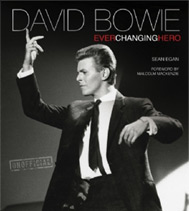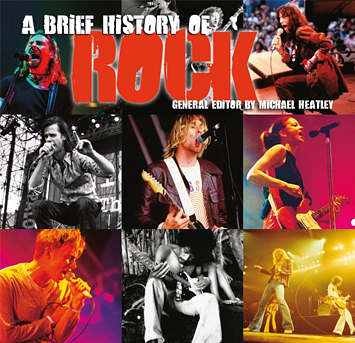The political structure of Europe changed greatly during the second half of the nineteenth century. Germany and Italy became united countries under supreme rulers. The Habsburgs’ Austrian Empire, ruled from Vienna, became fragmented into Austria-Hungary. The borders of this new confederation contained the cauldron of difficulties that eventually developed into the confrontations which culminated in World War I in 1914. The sense of a changing world gradually led to greater polarity ...
Glinka, the ‘father of Russian music’, was the first composer to forge a distinctively Russian style. Previously, during the reigns of Peter the Great and Catherine the Great in the eighteenth and early nineteenth centuries, music at the Imperial court had been directed by leading Italian opera composers such as Baldassare Galuppi (1706–85), Giovanni Paisiello (1740–1816) and Domenico Cimarosa (1749–1801). Significantly, Glinka’s musical training was European: after studies in Moscow ...
While in the US and several European countries there is a tradition of mixed wind bands, Britain developed bands made up of brass instruments with saxophone and percussion. The repertory of such ensembles tended to be arrangements of dance music, opera overtures and marches. (Twentieth-century British composers have pioneered original music for brass band.) The brass band developed from civic wind bands, called ‘waits’, and military bands. It was the ...
If any city could be cited as epitomizing the sense of decline and despair in the late nineteenth century it would be Vienna. Heartland of the oldest existing European empire, its shift from the liberalism of the 1840s towards the political conservatism of the 1890s onwards was typical, as was the inability of its emperor and ruling aristocracy to deal with the growing desire for popular change. The public appeal ...
In 1859, at a conference of musicians in Leipzig, the representatives of a musical ‘party of progress’ under the leadership of Liszt gave itself the name New German School in conscious opposition to Brahms and his followers, who were still committed to composing in the spirit of the classical style. During his sojourn in Weimar (1848–61), Liszt had gathered around him several musicians who thought of themselves as progressives, including ...
Between 1860 and 1918 Wagner became the most influential intellectual figure in Europe. For his Gesamtkunstwerk (‘Complete Art-Work’) he drew on a wide range of inspirations, including Greek tragedy, the symphonies of Ludwig van Beethoven (1770–1827) and his own historicist ideas of realizing the latent tendencies of all arts. This ensured that his music-dramas reached into almost every area of European artistic, philosophical and even political life. The performance of the ...
Although the composer Robert Schumann had prophesied in 1853 that Brahms would be pre-eminent in symphonic forms, he was diffident about coming before the public with a symphony. Many felt that Beethoven had already said all that there remained to say in this, the grandest of orchestral genres. So the eventual appearance of Brahms’ First Symphony in 1876 was a major event. In many respects an ‘answer to Beethoven’, it ...
The sense of cultural and societal degeneration and decline affected both the subject-matter of music and, more intangibly, its forms and structures. Much of the music of Johannes Brahms (1833–97), for instance, deliberately invoked earlier models as a way of linking himself with his idea of a great but past tradition. He saturated his music with counterpoint and old-fashioned devices almost as a way of ensuring its permanent worth. His ...
By the early nineteenth century, the orchestra was fairly standardized: strings, divided into first and second violins (typically about 16 each in a full-size group), violas (12), cellos (12) and double basses (8); woodwind, consisting of two each of flutes, oboes, clarinets and bassoons; and brass, usually two or four horns, two trumpets, occasionally three trombones, with percussion, generally just timpani. It expanded and extended its range of colour during ...
Commonly pitched in B flat like the standard orchestral clarinet, but sounding an octave below it, the bass clarinet began life as an eighteenth-century instrument that looked faintly like a dulcian, though with an upward-pointing bell. Adolphe Sax (1814–94) and L. A. Buffet (fl. 1839–43) both worked on the instrument in the nineteenth century. Sax developed one with two speaker keys, one high up and one halfway down the column ...
The invention of valves meant that brass instruments could now explore the bass register, and soon after 1835 bass tubas started being manufactured in Germany. Essentially a keyed bugle by descent, the bass tuba (confusingly, the name tuba comes from the Latin word for trumpet) has a very wide conical bore and as a result requires a good deal of puff. Although the modern instrument is oval with a vertical-facing ...
Attempts were made in the nineteenth century to turn the bassoon into a metal instrument: Charles and Adolphe Sax experimented with brass bassoons and the latter patented such an instrument, with 24 keys, in 1851. There were rival arrangements of keys (which implied different ways of fingering) available in the nineteenth century. There continue to be French and German models available. The Heckel family worked on developing the instrument, and their ...
The history of the bugle is usually traced to the Seven Years’ War (1756–63), when the semicircular metal hunting horn came into use on the battlefield. It settled down as a single loop, pitched in C or B flat around 1800, while a two-loop version developed later in the nineteenth century following the Crimean War (1853–56). This instrument was used for military calls and signals, some of which can be ...
The German player and maker Iwan Müller had developed a 13-keyed instrument in about 1812 and the music being written for the clarinet at the beginning of the nineteenth century by Weber, among others, made an instrument with 13 keys essential. While its chamber-music life in the classical period had produced such masterpieces as the Beethoven Septet (op. 20) and Mozart’s Clarinet Quintet in A (K581), in the Romantic period, ...
The cornet is a looped brass instrument with a wide bore and three valves. Beginning life as a development of the circular looped post horn, it became a valved instrument in France in the late 1820s. It apparently reached Britain in the 1830s, where its bright sound soon displaced the keyed bugle from amateur wind bands. Most often to be heard as a brass band instrument, it did make occasional appearances ...
AUTHORITATIVE
An extensive music information resource, bringing together the talents and expertise of a wide range of editors and musicologists, including Stanley Sadie, Charles Wilson, Paul Du Noyer, Tony Byworth, Bob Allen, Howard Mandel, Cliff Douse, William Schafer, John Wilson...
CURATED
Classical, Rock, Blues, Jazz, Country and more. Flame Tree has been making encyclopaedias and guides about music for over 20 years. Now Flame Tree Pro brings together a huge canon of carefully curated information on genres, styles, artists and instruments. It's a perfect tool for study, and entertaining too, a great companion to our music books.

David Bowie
Fantastic new, unofficial biography covers
his life, music, art and movies, with a
sweep of incredible photographs.


